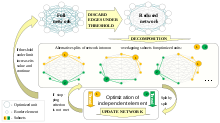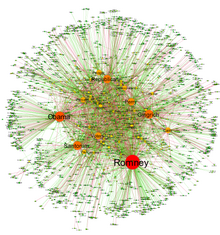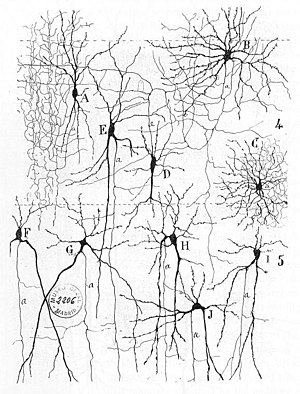Motivation
It is theoretically possible to take an advantage of quantum mechanics to create secure and faster communications, namely, quantum key distribution is an application of quantum cryptography that allows for theoretical completely secure communications, and quantum teleportation that can be used to transfer data at higher rate than using only classic channels.
The successful quantum teleportation experiments in 1998 followed by the development of first quantum communication networks in 2004, opened the possibility of quantum communication being used in a large scale in the future. According to findings in network science the topology of the networks is, in most cases, extremely important, and the exiting large scale communication networks today tend to have non-trivial topologies and traits, like small world effect, community structure and scale free properties.
The study of networks with quantum properties and complex network
topologies, can help us not only to better understand such networks but
also how to use the network topology to improve the efficiency of
communication networks in the future.
Important concepts
Qubits
In quantum information Qubits are the equivalent to bits in classical systems. A qubit is a property that when measured only can be found to be in one of two states, that is used to transmit information. The polarization of a photon or the nuclear spin are examples of two state systems that can be used as qubits.
Entanglement
Quantum entanglement is a physical phenomenon characterized by a correlation between the quantum states of two or more particles.
While entangled particle do not interact in the classical sense, the
quantum state of those particle can not be described independently.
Particles can be entangle in different degrees, and the maximally
entangled state are the ones the maximize the entropy of entanglement. In the context of quantum communication, quantum entanglement qubits are used as a quantum channel capable of transmitting information when combined with a classical channel.
Bell measurement
Bell measurement
is joint quantum-mechanical measurement of two qubits, so that after
the measurement the two qubits will be maixmailly entangle.
Entanglement swapping
Entanglement swapping is a frequent strategy used in quantum networks that allows the connections in the network to change.
Lets us suppose that we have 4 qubits, A B C and D, C and D belong to
the same station, while A and C belong to two different stations. Qubit A
is entangled with qubit C and qubit B is entangled with qubit D. By
performing a bell measurement
in qubits A and B, not only the qubits A and B will be entangled but
it is also possible to create an entanglement state between qubit C and
qubit D, despite the fact that there was never an interactions between
them. Following this process the entanglement between qubits A and C,
and qubits B and D will be lost. This strategy can be use to shape the
connection on the network.
Network structure
While
not all models for quantum complex network follow exactly the same
structure, usually nodes represent a set of qubits in the same station
where operation like Bell measurements and entanglement swapping can be applied. On the other hand, a link between a node and means that a qubit in node is entangled to a qubit in node , but those two qubits are in different places, thus physical interactions between them are not possible.
Quantum networks where the links are interaction terms instead of
entanglement may also be considered but for very different purposes.
Notation
Each
node in the network is in possession of a set of qubits that can be in
different states. The most convenient representation for the quantum
state of the qubits is the dirac notation and represent the two state of the qubits as and . Two particle are entangled if the joint wave function, , can not be decomposed as,
where represents the quantum state of the qubit at node i and
represents the quantum state of the qubit at node j. Another important
concept is maximally entangled states. The four states (the Bell states) that maximize the entropy of entanglement can be written as
Models
Quantum random networks
The quantum random network model proposed by Perseguers et al. can be thought of as a quantum version of the Erdős–Rényi model.
Instead of the typical links used to represent other complex networks,
in the quantum random network model each pair of nodes is connected
through a pair of entangled qubits. In this case each node contains
quibits, one for each other node. In a quantum random network, the
degree of entanglement between a pair of nodes, represented by , plays a similar role to the parameter in the Erdős–Rényi model. While in the Erdős–Rényi model two nodes form a connection with probability , in the context of quantum random networks
means the probability of an entangled pair of qubits being successful
converted to a maximally entangled state using only local operations and
classical communications, called LOCC operations. We can think of maximally entangled qubits as the true links between nodes.
Using the notation introduced previously, we can represent a pair of entangled qubits connecting the nodes and , as
For the two qubits are not entangled,
and for we obtain the maximally entangled state, given by
- .
For intermediate values of , , any entangled state can be, with probability , successfully converted to the maximally entangled state using LOCC operations.
One of the main features that distinguish this model from its
classic version is the fact the in quantum random networks links are
only truly established after measurements in the networks being made,
and it is possible to take advantage of this fact to shape the final
state of the network. Considering an initial quantum complex network
with an infinite number of nodes, Perseguers et al. showed that, by doing the right measurements and entanglement swapping, it is possible to collapse the initial network to a network containing any finite subgraph, provided that scales with as,
were .
This result is contrary to what we find in classic graph theory where
the type of subgraphs contained in a network is bounded by the value of .
Entanglement Percolation
The
goal of entanglement percolation models is to determine if a quantum
network is capable of establishing a connection between two arbitrary
nodes through entanglement, and to find best the strategies to create
those same connections. In a model proposed by Cirac et al. and applied to complex networks by Cuquet et al., nodes are distributed in a lattice, or in a complex network,
and each pair of neighbors share two pairs of entangled qubits that can
be converted to a maximally entangle qubit pair with probability . We can think of maximally entangled qubits as the true links between nodes. According to classic percolation theory, considering a probability of two neighbors being connected, there is a critical designed by , so that if there is a finite probability of existing a path between two random selected node, and for the probability of existing a path between two random selected nodes goes to zero. depends only on the topology of the network. A similar phenomena was found in the model proposed by Cirac et al., where the probability of forming a maximally entangled state between two random selected nodes is zero if and finite if .
The main difference between classic and entangled percolation is that
in quantum networks it is possible to change the links in the network,
in a way changing the effective topology of the network, as a
consequence will depend on the strategy used to convert partial entangle qubits to maximally connected qubits. A naive approach yields that for a quantum network is equal to for a classic network with the same topology. Nevertheless, it was shown that is possible to take advantage of quantum swapping to lower that value, both in regular lattices and complex networks.


































